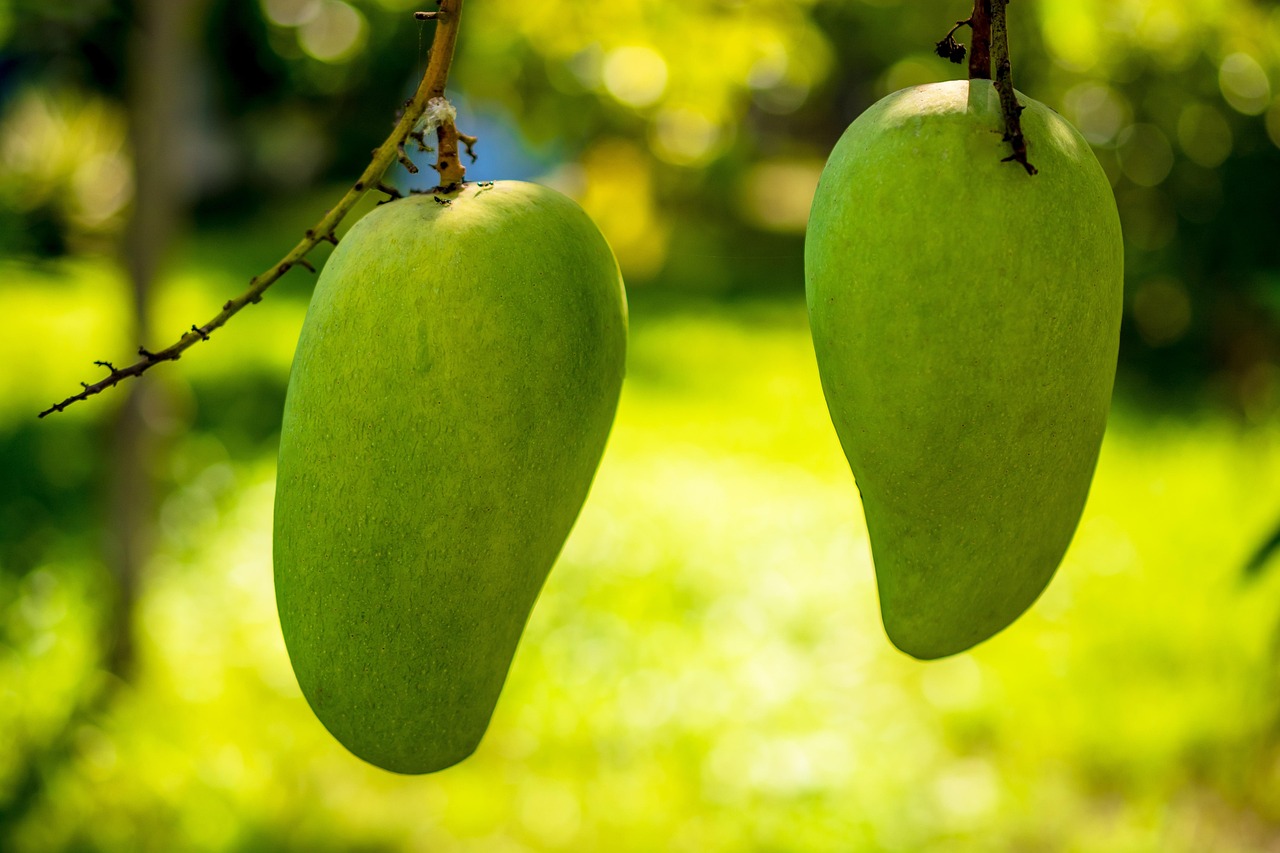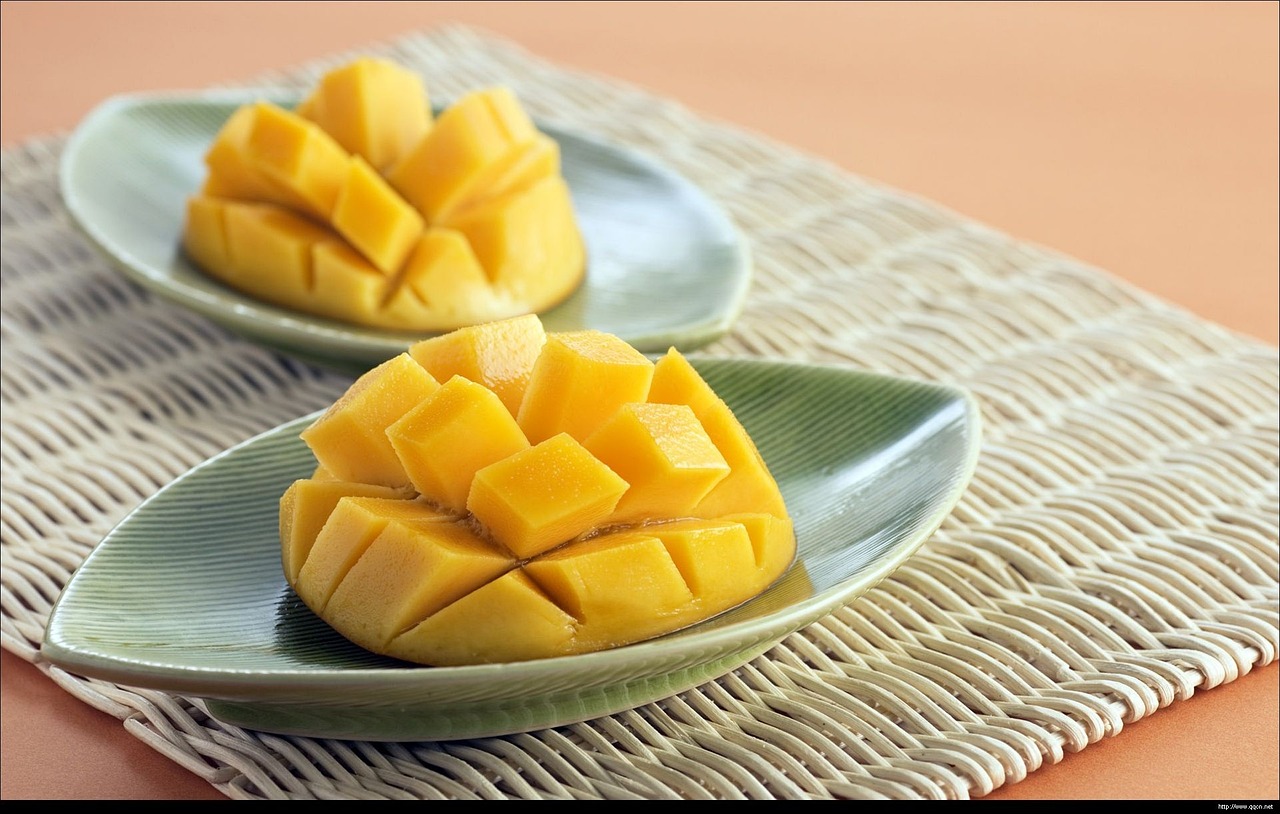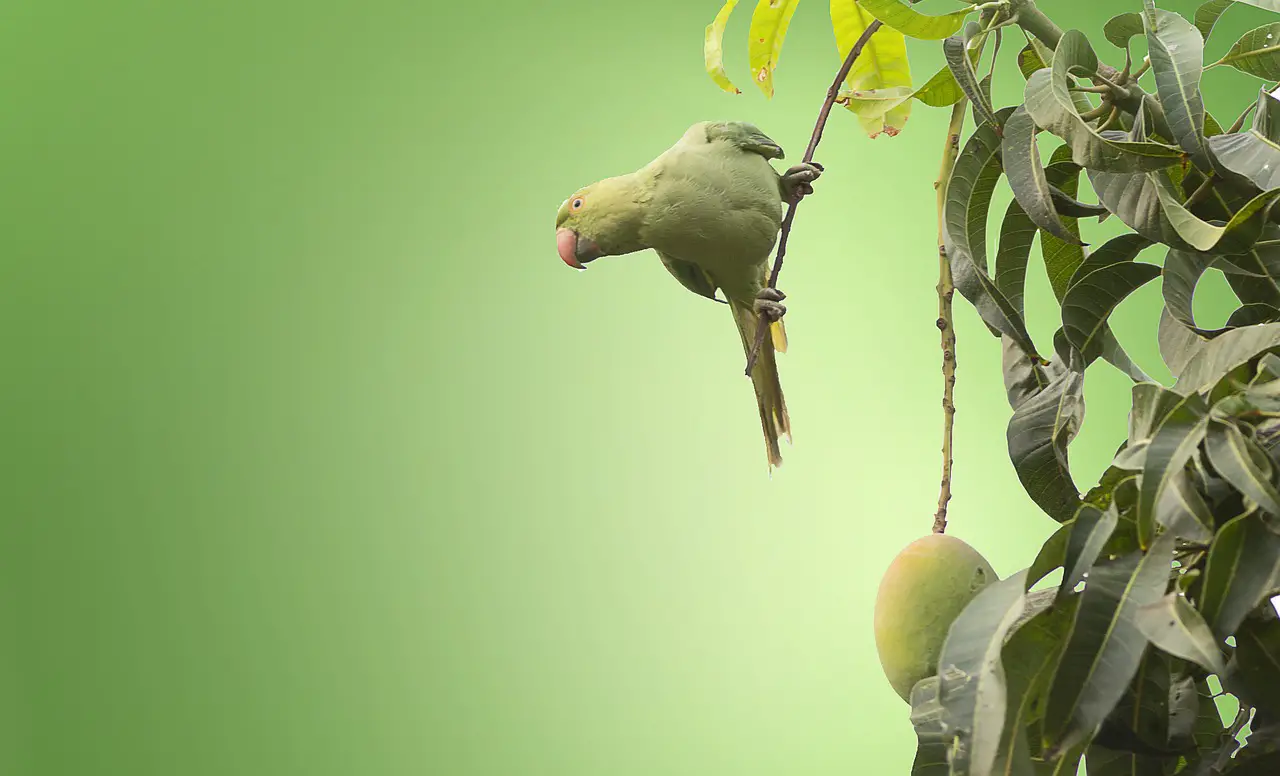Pruning mango trees properly can significantly enhance the size and juiciness of the fruit. Regular pruning helps to manage tree shape, improve air circulation, and increase sunlight exposure, all of which contribute to healthier fruit development.
Understanding the Importance of Pruning Mango Trees
Mango trees, known for their delicious fruit, require specific care to thrive. Pruning is a crucial aspect of maintaining the health and productivity of these trees. By removing certain branches and foliage, you can promote better growth, resulting in larger and juicier mangoes.

Healthy mango trees produce more fruit and have a greater capacity to withstand pests and diseases. Pruning not only enhances the tree’s structure but also encourages the growth of new branches that yield fruit. Additionally, proper pruning techniques can help manage the tree’s height, making it easier to harvest the fruit.
Benefits of Pruning Mango Trees
There are multiple benefits associated with pruning mango trees. Some of these advantages include:
- Improved Air Circulation: Thinning out dense foliage allows for better airflow, reducing the risk of fungal diseases.
- Enhanced Sunlight Exposure: Removing excess branches ensures that sunlight reaches all parts of the tree, which is essential for photosynthesis.
- Increased Fruit Size: By concentrating the tree’s energy on fewer fruits, pruning can lead to larger and more flavorful mangoes.
- Better Shape and Structure: A well-pruned tree is easier to manage and harvest from, ensuring that fruits are easily accessible.
When to Prune Mango Trees
Timing is vital when it comes to pruning mango trees. The best time to prune is typically at the end of the winter season or at the beginning of spring before new growth begins. This timing allows the tree to recover quickly and promotes healthy growth throughout the growing season.

Pruning during the wrong time can result in damage and stress to the tree. It is essential to avoid heavy pruning during the fruiting season as this can negatively impact crop yield. Always consider the local climate conditions when deciding on the timing of your pruning activities.
Essential Pruning Techniques
There are several techniques that can be employed when pruning mango trees. Each method serves a specific purpose and can help achieve desired results:
- Thinning: This technique involves removing some branches to reduce overcrowding. Thinning helps improve air circulation and sunlight penetration.
- Heading Back: This method entails cutting back new growth to encourage branching. It helps maintain a manageable size and shape of the tree.
- Crown Reduction: For taller trees, crown reduction involves shortening the height while maintaining the overall shape. This makes harvesting easier and promotes fruit growth at lower levels.
Tools Needed for Pruning
Having the right tools is essential for effective pruning. Here are some tools you will need:

- Pruning Shears: Ideal for small branches and precise cuts.
- Loppers: Useful for cutting thicker branches that are too large for shears.
- Saw: A hand saw or power saw may be necessary for larger limbs.
- Gloves: Protect your hands while working with sharp tools.
Common Mistakes to Avoid
While pruning mango trees can be beneficial, there are common mistakes that should be avoided:
- Over-Pruning: Removing too many branches can stress the tree and reduce fruit yield.
- Poor Cutting Technique: Always make clean cuts at angles to prevent damaging the tree.
- Ignoring Tree Health: Before pruning, assess the overall health of the tree to determine the best approach.
| Pruning Technique | Description | Best Time to Use |
|---|---|---|
| Thinning | Removing branches for better air circulation and sunlight exposure. | Late winter or early spring |
| Heading Back | Cuts new growth to encourage branching. | Before new growth begins |
| Crown Reduction | Shortening tree height while maintaining shape. | Late winter or early spring |
By understanding these aspects of pruning mango trees, you can create a more productive environment for healthy fruit growth. Proper care will ensure that your mangoes are not only plentiful but also larger and juicier than ever before.
Specific Pruning Techniques for Mango Trees
To maximize the benefits of pruning, it is essential to understand specific techniques tailored to mango trees. Different methods can be employed based on the tree’s age, size, and desired fruit yield. Below are some detailed techniques that can help you achieve larger and juicier mangoes.

1. Selective Pruning
Selective pruning involves carefully choosing which branches to cut while leaving others intact. This technique focuses on enhancing the tree’s overall structure and productivity.
- Focus on Weak or Diseased Branches: Remove any branches that show signs of disease or damage. This helps prevent the spread of infections and promotes healthier growth.
- Remove Suckers: Suckers are small shoots that grow from the base or lower trunk of the tree. Removing these encourages the tree to direct energy toward producing fruit instead of unnecessary foliage.
- Encourage Strong Branches: Keep only the strongest branches that grow at appropriate angles to support fruit load. This will help maintain balance and stability for the tree.
2. Shaping and Training Young Mango Trees
For young mango trees, shaping and training are crucial for establishing a strong framework. Here are some key methods:
- Centrally Leader System: Allow one main trunk to develop that will serve as the central leader of the tree. This promotes upward growth and prevents overcrowding.
- Branch Spacing: Ensure that branches are spaced evenly around the tree. This allows for sunlight penetration and air circulation, crucial for healthy fruit development.
- Managing Height: Regularly trim the top of the tree to encourage lateral growth. This helps in controlling the height, making it easier to harvest fruits as the tree matures.
3. Summer Pruning for Fruit Quality
While most pruning occurs in late winter or early spring, summer pruning can also be beneficial, especially for fruit quality. This technique involves removing unwanted growth during the growing season.
- Remove Excess Shoots: Trim back excessive new shoots that may compete with fruit development. This ensures that energy is focused on maturing existing fruits.
- Pinching: Pinch off the tips of young shoots to promote bushier growth. Bushier trees tend to produce more fruit.
- Limiting Fruit Set: If a tree is overloaded with fruit, selectively removing some can lead to larger, more flavorful mangoes.
4. Maintenance Pruning
Maintenance pruning is essential throughout the life of a mango tree. This process involves regular checks and adjustments to ensure optimal health.
- Inspect Regularly: Conduct frequent inspections for any signs of disease or damage. Early detection can help mitigate serious issues.
- Annual Pruning: Each year, evaluate and prune as necessary to maintain shape and health. Even mature trees need periodic attention to continue producing quality fruit.
- Seasonal Adjustments: Adapt your pruning strategy based on seasonal growth patterns and weather conditions. Flexibility ensures that your tree receives optimal care.
The Role of Fertilization in Pruning Success
Fertilization plays a significant role in the health of mango trees, especially after pruning. When you prune a tree, you remove some of its leaves and branches, which can affect its ability to photosynthesize effectively. Therefore, proper fertilization is essential to support recovery and promote fruit production.
Nutrient Requirements
Mango trees require a variety of nutrients for optimal growth. Key nutrients include:
- Nitrogen: Essential for leaf growth and overall tree vigor.
- Phosphorus: Important for root development and flower formation.
- Potassium: Enhances fruit quality and aids in disease resistance.
Fertilization Schedule
A proper fertilization schedule will help ensure that your mango trees recover well after pruning:
- Pre-Pruning Fertilization: Apply a balanced fertilizer before pruning to strengthen the tree.
- Post-Pruning Fertilization: After pruning, apply a nitrogen-rich fertilizer to support new growth.
- Annual Fertilization: Establish an annual schedule for reapplying nutrients in early spring.
Pest and Disease Management Post-Pruning
After pruning, it’s important to monitor your mango trees for pests and diseases. Stress from pruning can make trees more vulnerable. Here are some effective management strategies:
- Pest Inspection: Regularly check for common pests such as aphids, mealybugs, and fruit flies that may target stressed trees.
- Disease Prevention: Use fungicides as a preventive measure if there is a history of fungal diseases in your area.
- Cultural Practices: Maintain cleanliness around the base of the tree by removing fallen leaves and fruits that may harbor pests or diseases.
By implementing these specific techniques and practices, you can significantly enhance the health and productivity of your mango trees, leading to larger and juicier fruits in future harvests.
Understanding Mango Tree Varieties
Not all mango trees are created equal. Different varieties can exhibit varying growth habits, fruit size, and flavor profiles. Understanding these differences can aid in determining the best pruning methods for your specific tree type, ultimately leading to improved fruit production.
Popular Mango Varieties
Here are some of the most popular mango varieties cultivated worldwide:
- Haden: Known for its rich flavor and vibrant color, Haden mangoes are medium to large-sized fruits with a thick skin.
- Tommy Atkins: A widely recognized variety, Tommy Atkins mangoes have a long shelf life and are often found in supermarkets. They are smaller but have a good balance of sweetness and acidity.
- Alphonso: Revered for its exceptional sweetness and rich taste, Alphonso mangoes are typically larger and have a smooth texture.
- Kent: This variety is known for its juicy flesh and minimal fiber. Kent mangoes are usually oval-shaped and have a greenish-yellow skin.
Pruning Techniques Based on Tree Variety
Different mango varieties may respond better to specific pruning techniques. Here are tailored approaches depending on the variety:
Haden Mango Trees
For Haden mango trees, selective pruning works best due to their dense foliage. Focus on:
- Thinning out crowded areas to allow more light and air circulation.
- Maintaining strong branches that can support the weight of fruit.
Tommy Atkins Mango Trees
Tommy Atkins trees benefit from heading back techniques since they tend to grow tall and spread out:
- Regularly cut back taller branches to promote bushier growth.
- Encourage lateral branching to increase fruiting potential.
Alphonso Mango Trees
Alphonso trees require careful shaping due to their premium fruit quality:
- Focus on maintaining an open canopy for sunlight penetration.
- Monitor and remove any weak or diseased branches promptly.
Kent Mango Trees
Kent trees are less prone to disease but require regular maintenance:
- Conduct annual pruning to control height and maintain shape.
- Remove any unwanted suckers and thin out excess foliage for better fruit quality.
The Role of Climate in Pruning Practices
The climate in which mango trees are grown greatly influences their growth patterns and, consequently, the pruning techniques used. Understanding local climate conditions can help you optimize your pruning schedule.
Warm Climates
In warmer climates, mango trees tend to grow vigorously. Here are some considerations:
- Prune after the last frost in late winter or early spring to avoid damaging new growth.
- Consider summer pruning to manage excessive growth and enhance fruit quality.
Cooler Climates
Mango trees in cooler climates may experience limited growth:
- Focus on pre-winter pruning to prepare the tree for colder conditions.
- Limit heavy pruning during cooler months as it may stress the tree.
Common Mistakes in Pruning Mango Trees
Even with the best intentions, common mistakes can occur during the pruning process. Being aware of these pitfalls can help you improve your technique and achieve better results.
- Pruning Too Late: Delaying pruning until after new growth begins can hinder fruit production.
- Neglecting Tree Structure: Failing to consider the natural shape of the tree may lead to poor air circulation and uneven fruit distribution.
- Using Dull Tools: Dull tools can cause jagged cuts, which may lead to disease entry points.
- Ignoring Local Guidelines: Always consider local horticultural advice tailored to your specific climate and tree variety.
The Importance of Watering Post-Pruning
After pruning, proper watering is essential for recovery. Newly pruned trees may experience stress, making sufficient hydration critical for regrowth and fruiting.
Watering Techniques
Here are some effective watering practices following pruning:
- Deep Watering: Ensure deep watering to promote root development. Watering deeply encourages roots to grow deeper into the soil.
- Avoid Over-Watering: While hydration is critical, avoid waterlogging as it can lead to root rot. Ensure the soil has proper drainage.
- Mulching: Apply mulch around the base of the tree to retain moisture and regulate soil temperature.
The Benefits of Regular Monitoring
Regularly monitoring your mango trees post-pruning can lead to timely interventions and better overall health. Here’s what you should keep an eye on:
- Growth Patterns: Observe how well your tree responds after pruning. Look for signs of new growth within a few weeks.
- Pest Activity: Be vigilant about any pest infestations that may arise due to stress from pruning.
- Water Needs: Adjust your watering schedule based on seasonal changes and tree response post-pruning.
This attentive approach not only improves the health of your mango trees but also ensures a bountiful harvest of larger and juicier fruits in the future.
The Importance of Seasonal Pruning
Seasonal pruning is a vital practice for ensuring the health and productivity of mango trees. By understanding the seasonal growth cycles, you can tailor your pruning methods to maximize results.
Spring Pruning
Spring is often the most crucial time for pruning mango trees. As the trees begin to awaken from winter dormancy, they are primed for new growth. Here are some key practices:
- Remove Dead Wood: Begin by cutting away any dead or damaged branches. This encourages healthy new growth.
- Shape the Tree: Focus on creating an open canopy to allow sunlight to penetrate all areas of the tree.
- Monitor Flower Buds: Be cautious around flower buds, as cutting too many can affect fruit yield.
Summer Pruning
Summer pruning can help manage excessive growth and improve fruit quality. It’s essential to focus on:
- Removing Excess Shoots: Trim back overly vigorous shoots that may compete with fruit development.
- Pinching Back: Pinch off the tips of young branches to encourage bushier growth and promote fruiting.
Winter Pruning
In cooler climates, winter pruning is critical for preparing the tree for the upcoming growing season. Consider the following:
- Assess Tree Health: Check the overall health of the tree and remove any branches that could be problematic in winter.
- Limit Heavy Pruning: Avoid heavy cuts during this time as it may stress the tree.
Understanding Soil Health for Optimal Growth
The health of your mango tree is closely tied to soil conditions. Proper soil management can significantly impact growth and fruit quality.
Soil Composition
Mango trees thrive in well-draining soil rich in organic matter. Key considerations include:
- pH Levels: The ideal soil pH for mango trees is between 5.5 and 7.5. Regular soil testing can help maintain optimal levels.
- Organic Matter: Incorporating compost or organic fertilizers improves soil structure and nutrient availability.
Soil Moisture Management
Maintaining proper moisture levels is crucial for healthy mango trees:
- Avoid Overwatering: While mango trees need consistent moisture, overwatering can lead to root rot. Ensure good drainage.
- Irrigation Techniques: Utilize drip irrigation systems to provide steady moisture while minimizing water waste.
Utilizing Technology in Mango Tree Care
Advancements in technology can greatly enhance your ability to care for mango trees effectively. Here are some tech-driven strategies:
- Sensors and Monitoring Systems: Use soil moisture sensors and weather stations to gather data on environmental conditions, allowing precise watering schedules.
- Drones for Inspection: Employ drones to survey large orchards, identifying areas that may need more attention or intervention.
- Mobile Applications: Leverage apps designed for gardeners and farmers to track growth patterns, pest activity, and pruning schedules.
Final Thoughts
Caring for mango trees through proper pruning techniques is essential for achieving larger and juicier fruits. By understanding the specific needs of different varieties, seasonal growth patterns, and soil health, you can foster a thriving environment conducive to fruit production.
The integration of modern technology can further enhance your gardening practices, enabling more precise care and timely interventions. Regular monitoring and maintenance will ensure that your mango trees remain healthy throughout their life cycle.
With dedication and attention to detail, your efforts will yield bountiful harvests of delicious mangoes that are not only larger but also bursting with flavor. Embrace these practices, and enjoy the fruits of your labor for years to come!
